
The pale, sulfur yellow petals of sulfur cinquefoil (Potentilla recta) have a deeper yellow splash in the center as if egg yolk had been spilled on them. This is a two-foot tall, rough looking plant that is said to be invasive, but I hardly ever see it and when I do, never in great numbers. It grows in unused pastures and along roadsides and in waste places and it is said to out compete grasses, but I don’t know where. I think it’s a very pretty flower and it’s big enough to be seen from a distance.

I have found orange hawkweed (Pilosella aurantiaca) growing in a meadow in Hancock, and I’ve also found it growing in another meadow in Walpole, but I’ve never seen it here until I found it growing in a roadside ditch. The meadows are hot and dry places in summer, with poor soil, but the roadside ditch has wetter soil so it’s hard to figure out what this plant prefers. Orange is a hard color to find in nature, so I’d love to see more of them. It’s from Europe and is considered invasive but I’m not sure where it is invasive.

Northern bush honeysuckles (Diervilla lonicera) have just started blooming. Their tubular, pale yellow flowers grow near the ends of arching branches that can hang down almost to the ground, so many people don’t even notice them. They are low growing shrubs that are especially interesting because of the orange inner bark. It isn’t a true honeysuckle, but gets its common name from its opposite leaves that resemble honeysuckles. It’s a pretty little thing that is native to eastern North America.
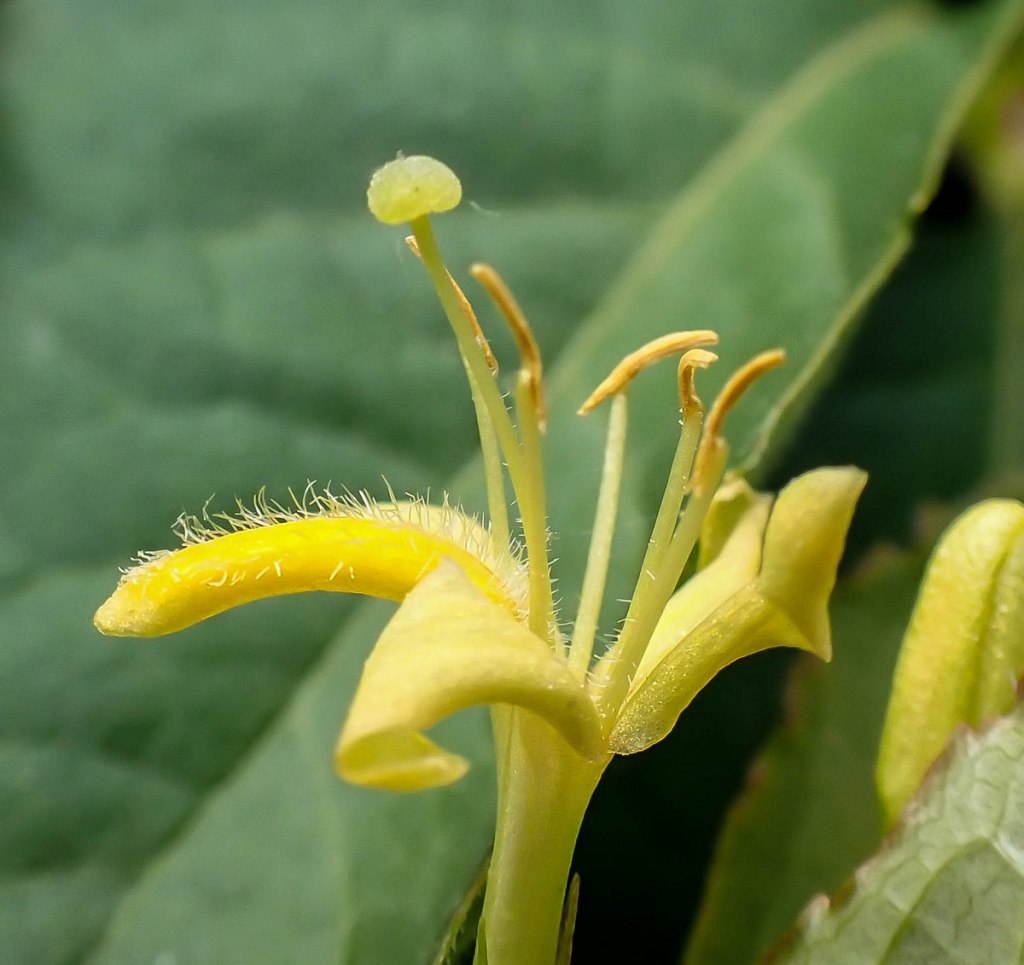
The flowers of bush honeysuckle have a single long, hairy petal that serves as a landing pad for insects. The hairs give them something to hang on to, presumably. Another interesting feature of these flowers is the big (relatively) red, mushroom shaped pistil.
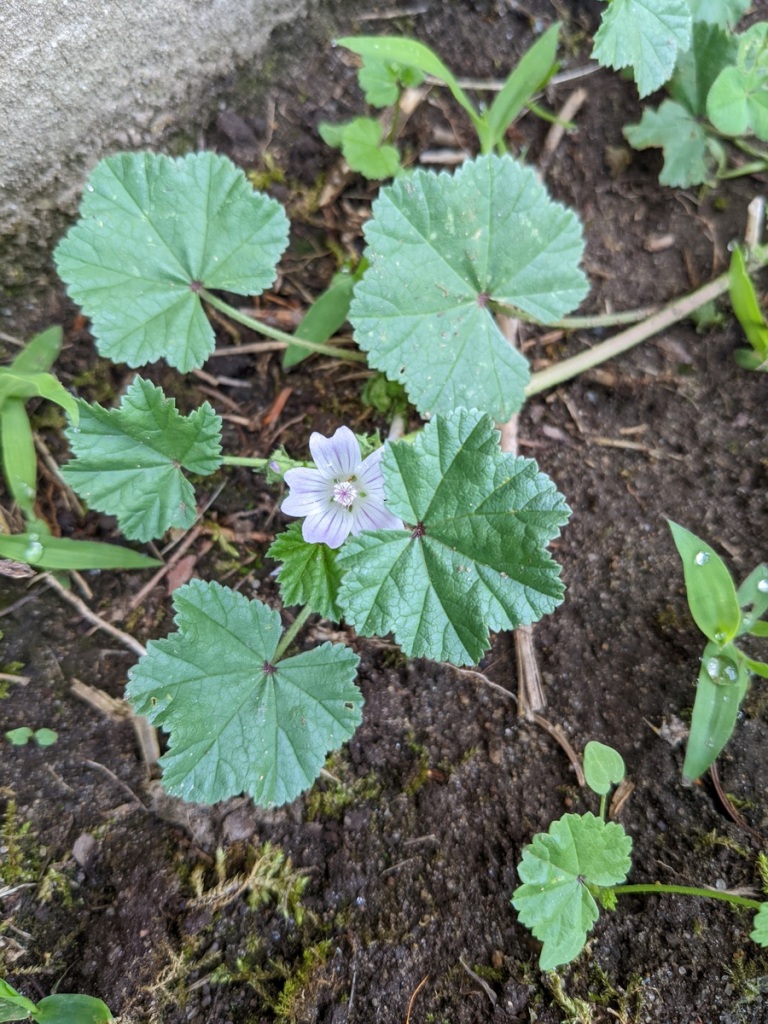
There are quite a few plants in this post that I’ve never seen before, and one of them is the dwarf mallow (Malva neglecta) that I found growing along the foundation of an old mill building. From what I’ve read it is also called button weed or cheese plant. The leaves and flowers can be used to treat throat irritation and bronchitis. The seeds contain 21% protein and 15.2% fat and are eaten. In fact from what I’ve read the entire plant can be eaten.

A couple of years ago I found another mallow, but it was an upright plant that was about 5 feet tall. It bloomed in the fall and with help it was identified as marshmallow. This one is very low growing, almost creeping, but that could be caused by where it grows. It might have been “trained” to creep the way it does by being repeatedly weed whacked. In any event it’s a very pretty little flower, maybe an inch across. The identification comes from Google lens which isn’t always correct, so if you disagree, I hope you’ll let me know.

The milkweeds are starting to bloom, and native spreading dogbane (Apocynum androsaemifolium) is related to them. If you break a stem white latex will drip from it, much like milkweed. It is a wildflower that is a bit woody and looks like a two-foot-tall shrub. It likes growing in sandy soil along sunny forest edges, or in clearings. Many species of butterflies rely on it, so it should be left to grow whenever possible.

Spreading dogbane has pretty little small, light pink, bell shaped flowers that have deeper pink stripes on their insides. They are fragrant but their scent is hard to describe. Spicy maybe. It is pollinated by butterflies and the flowers have barbs inside that trap short tongued insects. That’s how it gets another of its common names: flytrap dogbane. Each flower is just about big enough to hold a pea.
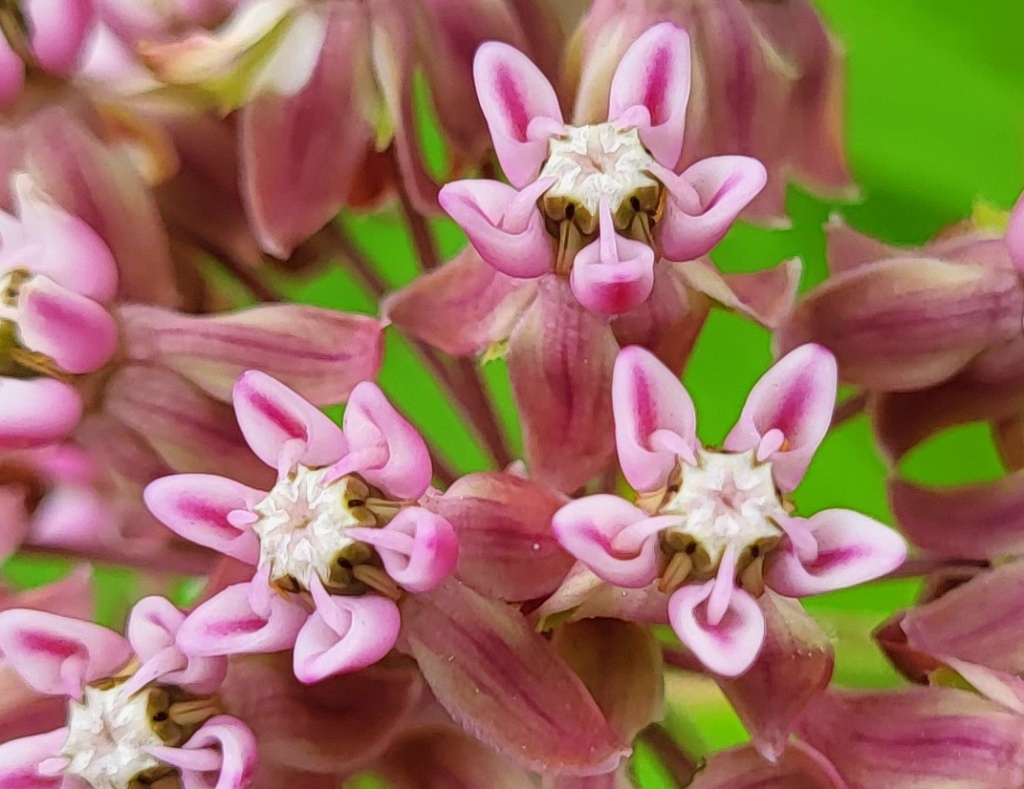
Common milkweed has also just come into bloom. It’s a very beautiful flower that few pay any attention to. I’ve known it for such a long time. One of my earliest memories includes watching big black and yellow garden spiders catch insects in the webs that they stretched across adjoining milkweed plants.

Common sage flowers (Salvia officinalis) have never appeared on this blog and that is mostly because I never paid them any attention. For thousands of years many Native American tribes have used sage as an incense and a purifying herb. It is burned before traditional ceremonies as a spiritual cleanser, and is one of the herbs included in medicine bundles and amulets. I once worked for a lady who was studying homeopathic medicine and she had me grow armloads of sage that I cut, hung and dried for her. She used it medicinally and also as incense. Her house always smelled like thanksgiving.
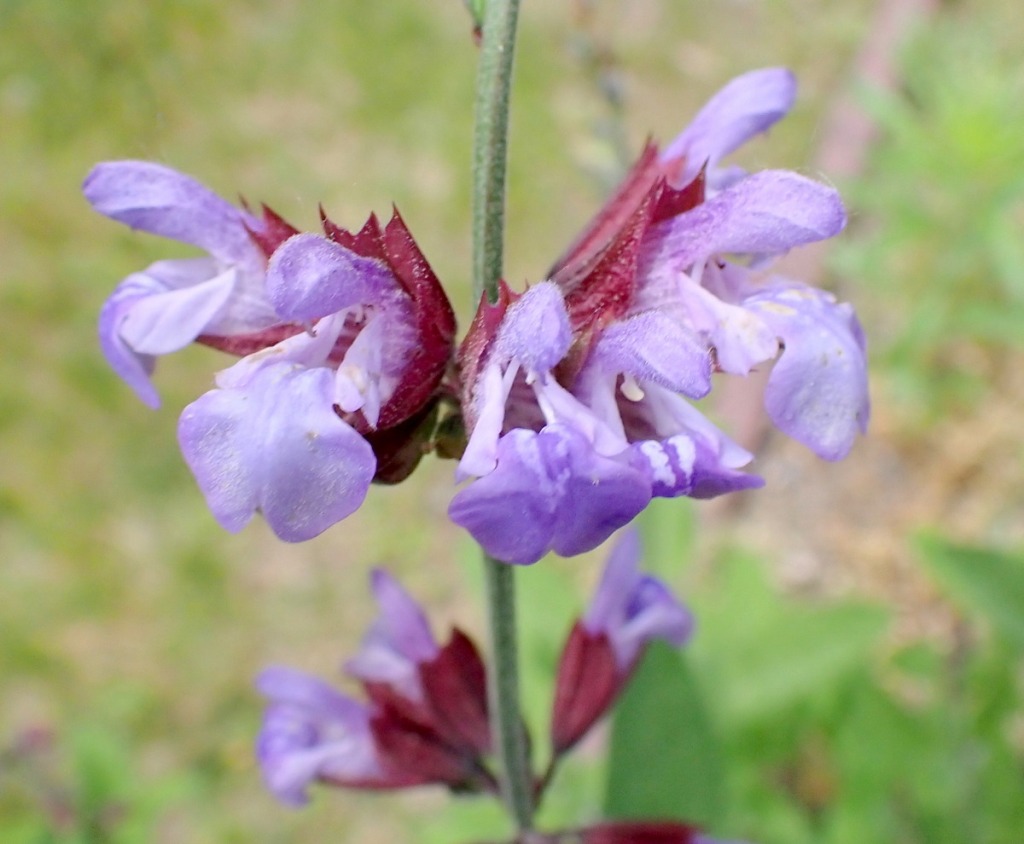
But this time I have come for the flowers, and they’re very pretty. I won’t ignore them any longer.

White wood sorrel (Oxalis montana) is having a good year from what I’ve seen, though I only know one place where it grows. It likes to grow where it’s cool and moist with high humidity. Though the word Montana appears in its scientific name it doesn’t grow there. In fact it doesn’t grow in any state west of the Mississippi River. It is considered a climax species, which are plants that grow in mature forests, so that may be why I don’t often see it.

White wood sorrel goes to great lengths to attract insects, with its yellow spot on each petal and purplish guide lines. All things point right at the center where the treasure is found.

I found Deptford pink (Dianthus armeria) blooming by the roadside on one of my walks. Its flowers are smaller than their cousins maiden pinks (Dianthus deltoids) and bloom a bit later. They don’t usually have the same bold, jagged, deep maroon ring near their center, but this one did. These plants will get quite tall and don’t seem to have the clumping habit of maiden pinks. Both plants are originally from Europe and have escaped cultivation. Maiden pinks seem to prefer open lawns and meadows while Deptford pinks hide shyly just at the sunny edges of the forest.

As far as I know plant breeders have yet to come up with a truly black flower, but this columbine certainly looked black when I saw it. The camera saw it differently though, and I saw deep purple when I looked at the photo. It’s amazing how different it looks now compared to how it looked in the garden it grew in.

It was beautiful no matter how you looked at it, but it wasn’t black.

I don’t know what is going on with mountain laurels this year but I’m suddenly seeing pink ones. I’ve seen pink sheep laurels and bog laurels, but never a pink mountain laurel growing in a garden. They’ve always been white as long as I’ve known them. But I do like the pink ones, and I think I like them even more than the white ones.

This is something I’ve never seen a peached leaved bluebell (Campanula persicifolia) do. It is normally a bell-shaped flower in the campanula family but this one opened like a daisy. The name campanula comes from the Latin campana meaning bell, but this flower didn’t want any part of it and shrugged it off and became something new. I applauded its nonconformity.
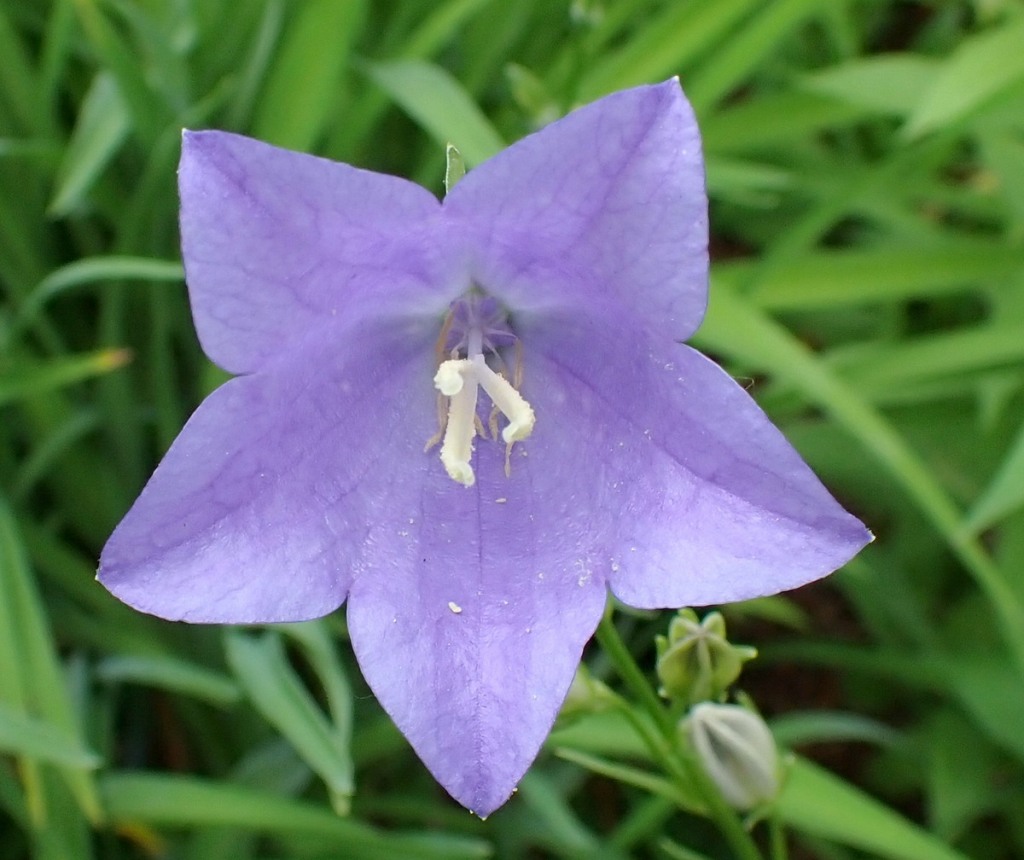
Here is what a conventional peach leaved bluebell flower looks like. Until I saw the flower in the previous photo, I would have said that they had five lobes. The name “peach leaved” comes from its leaves resembling those of the peach tree. It is very easy to grow-literally a “plant it and forget it” perennial and it is said to be an English cottage garden classic. I’ve read that it grows in the Alps and other mountain ranges in Europe, but its natural habitat is woodland margins, rocky outcrops in broad-leaved woods, meadows and stream banks. It’s a very pretty, old fashioned flower that should really still be used in any perennial bed. I’d love to see a field full of them.

I saw a late blooming orange azalea in a local park. Some orange “flame” azaleas can shout, but this one barely whispered.

Here was another plant I’ve never seen before called wide or willow leaf eastern blue star (Amsonia tabernaemontana var. salicifolia). I love the star shaped blue flowers on a plant which reminds me of garden phlox, in a way. Its shape and height seem similar. It’s a native plant that is a member of the dogbane family, and it has a white, latex sap. From what I’ve read the sap makes it unappetizing to rabbits, slugs and deer. There are butterflies that like it very much though, so it sounds like a winner. I found it in a local garden.

I go by a house fairly regularly when I walk and the yard is mostly flowerless, but then one day there was this large mass of foot tall blooms which my color finding software tells me are violet or orchid colored. They grew right beside the road and I was surprised to see when I walked over to them that they were catchfly plants (Silene armeria). This plant is originally from Europe and is also called sweet William catchfly. It is said to be an old-fashioned garden plant in Europe and is supposed to be a “casual weed” in New Hampshire. The name catchfly comes from the sticky sap it produces along its stem. It’s a very pretty flower that really makes a statement when massed as these were, but I rarely see it.

Daisy fleabane (Erigeron strigosus) is suddenly everywhere. And I do mean everywhere; I’ve even seen this plant off in the woods in any spot that happens to get enough sunlight. Often if you find it in the shade the flowers will appear purple to the camera but in this bright sunlight on this day, they were white.
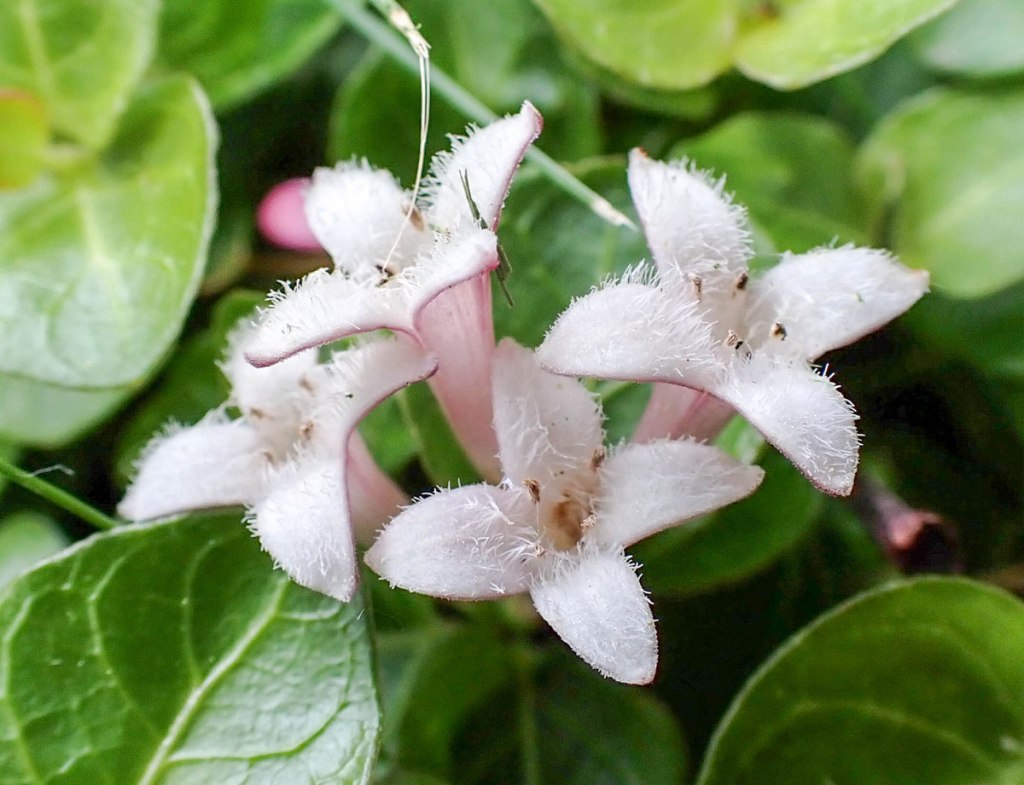
The forest floor is dotted here and there with small white, four pointed, furry stars and that means it’s partridgeberry (Mitchella repens) time. The flowers are always twinned, so there are two pair here. The tiny flowers are unusual in how they share a single ovary, and the red berry they produce will have two dimples where the flowers were. My favorite part of the plant is its leaves, which look like they were hammered out of metal. I hope you have such wonders where you are.
Flowers have a mysterious and subtle influence upon the feelings, not unlike some strains of music. They relax the tenseness of the mind. They dissolve its vigor. ~Henry Ward Beecher.
Thanks for coming by. Happy summer!












































































































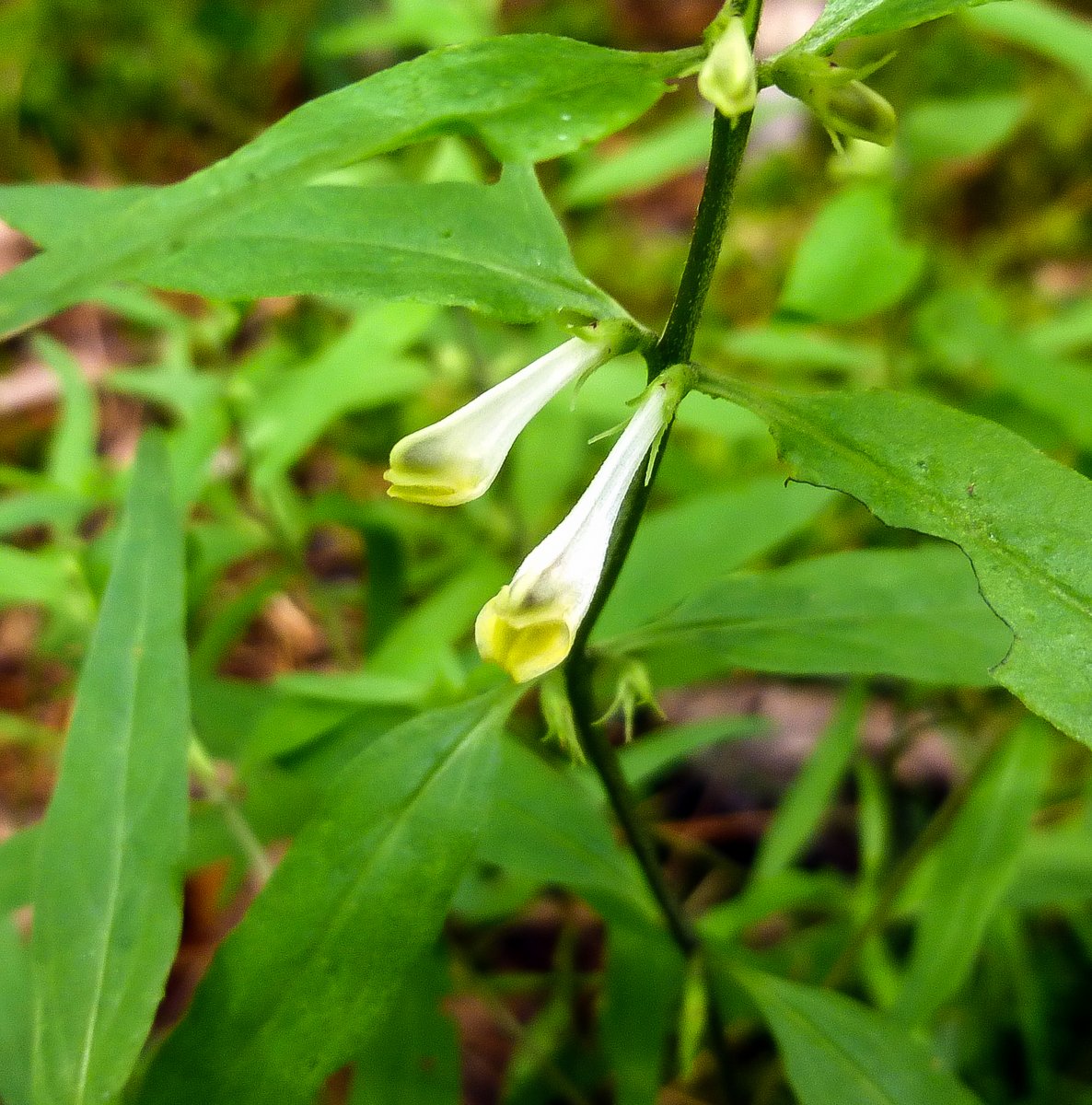

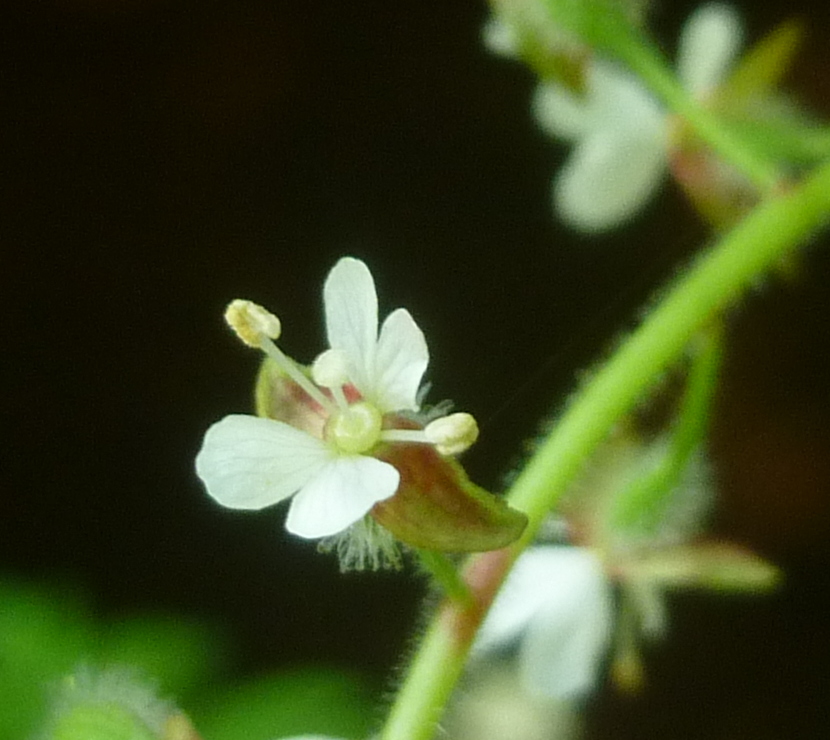
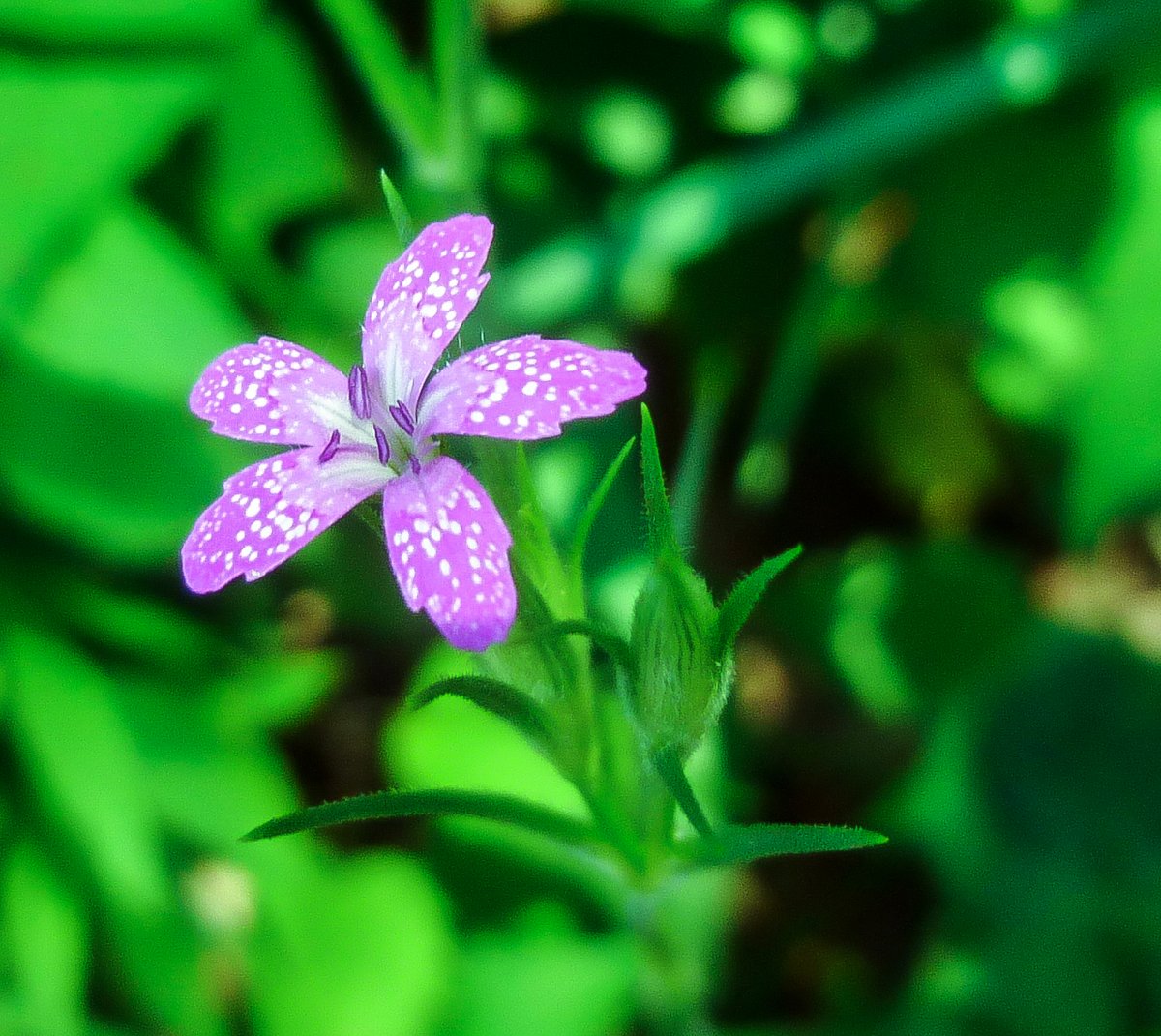

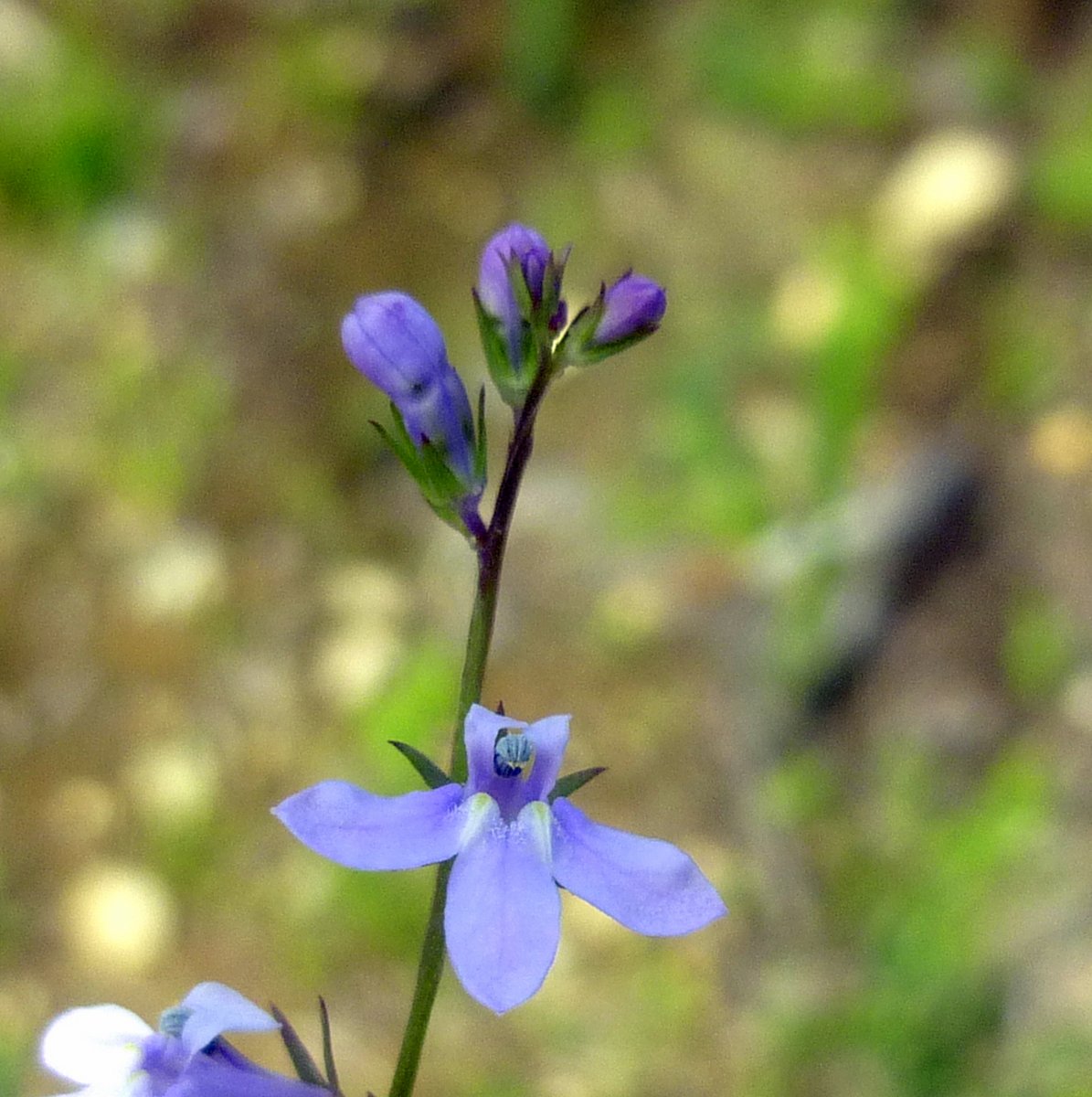


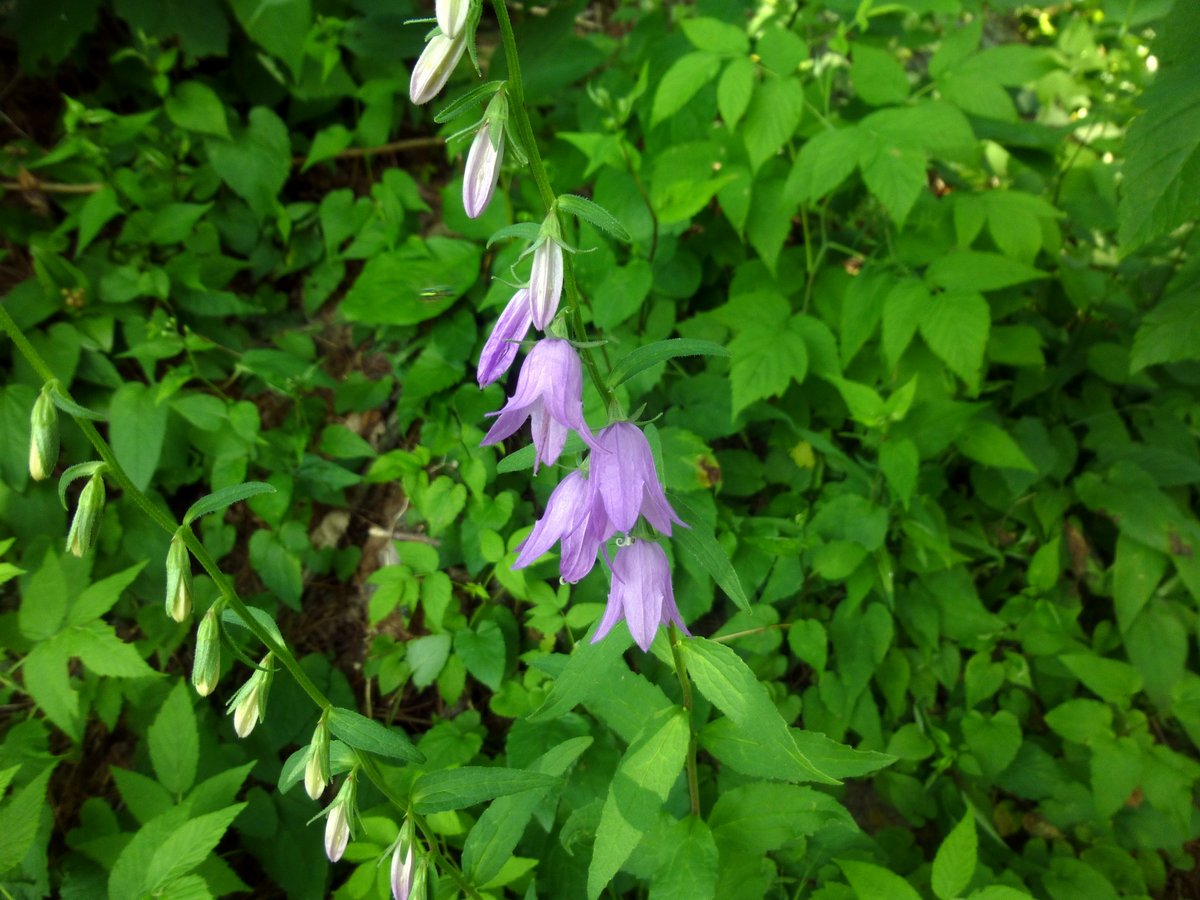

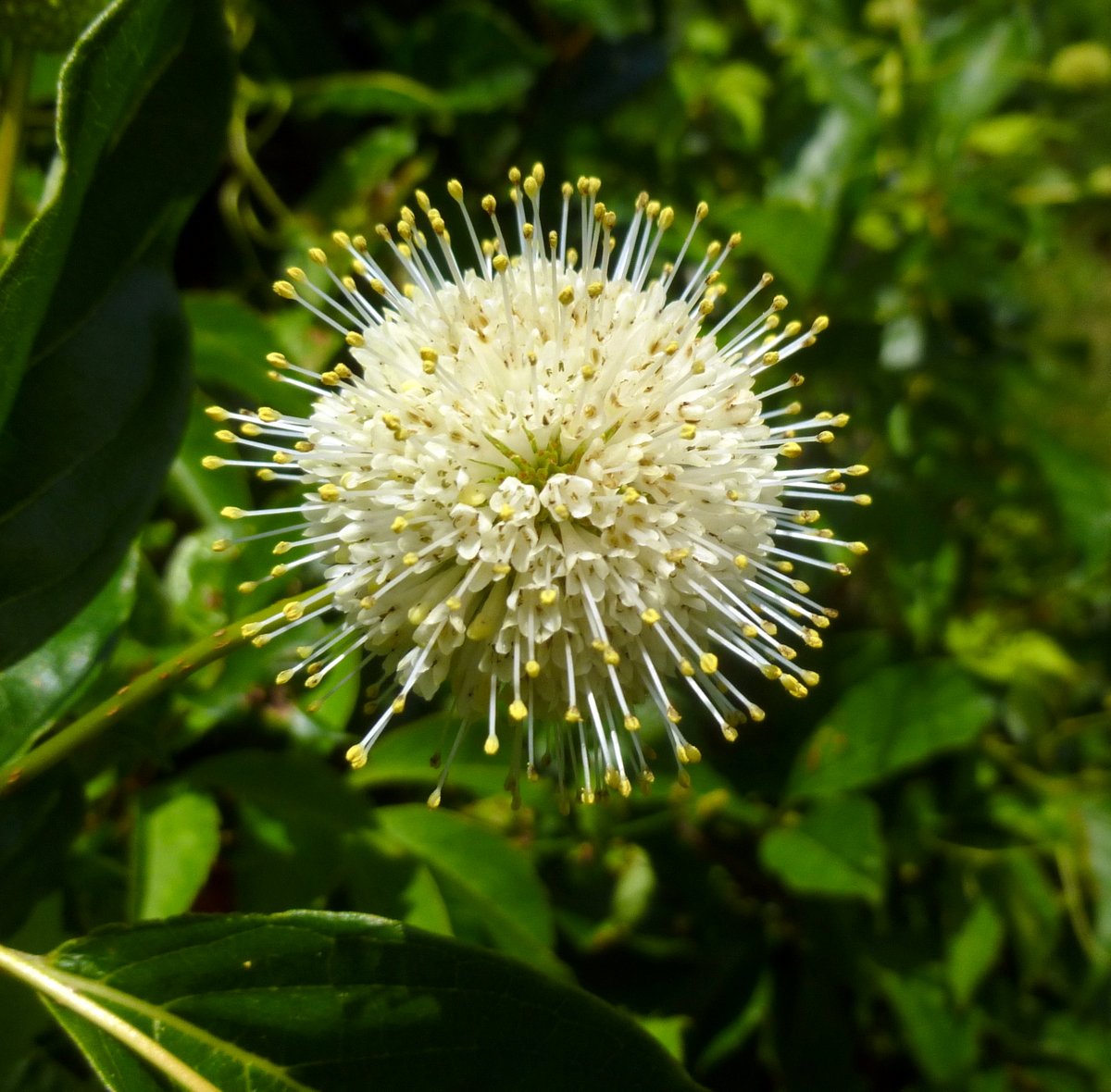





 Years ago I worked as a gardener for a lady who had an older widower as a neighbor. One day the widower asked me to stop by his house for a minute when I was through. I stopped in to see him as he asked and he told me if I could identify the hedge in his front yard he would hire me to be his gardener right then and there. To make a long story short I told him that his hedge was Purple flowering raspberry and I ended up working for him until he died. Purple flowering raspberry (Rubus odoratus) is in the rose family and might be mistaken for a rose if it wasn’t for its large, maple-like leaves. The native shrub will reach 3-6 feet tall and twice as wide under the right conditions. I found the one pictured growing near a culvert on the side of the road. I don’t know who the visitor was.
Years ago I worked as a gardener for a lady who had an older widower as a neighbor. One day the widower asked me to stop by his house for a minute when I was through. I stopped in to see him as he asked and he told me if I could identify the hedge in his front yard he would hire me to be his gardener right then and there. To make a long story short I told him that his hedge was Purple flowering raspberry and I ended up working for him until he died. Purple flowering raspberry (Rubus odoratus) is in the rose family and might be mistaken for a rose if it wasn’t for its large, maple-like leaves. The native shrub will reach 3-6 feet tall and twice as wide under the right conditions. I found the one pictured growing near a culvert on the side of the road. I don’t know who the visitor was.










 Canada lilies (Lilium canadense) have purple spotted throats that aren’t always seen because the flowers almost always face downwards. This plant is unusual because it prefers wet places. Most lilies, and in fact most plants that grow from bulbs, do not like soil that stays wet. They prefer sandy, well-drained soil.
Canada lilies (Lilium canadense) have purple spotted throats that aren’t always seen because the flowers almost always face downwards. This plant is unusual because it prefers wet places. Most lilies, and in fact most plants that grow from bulbs, do not like soil that stays wet. They prefer sandy, well-drained soil.